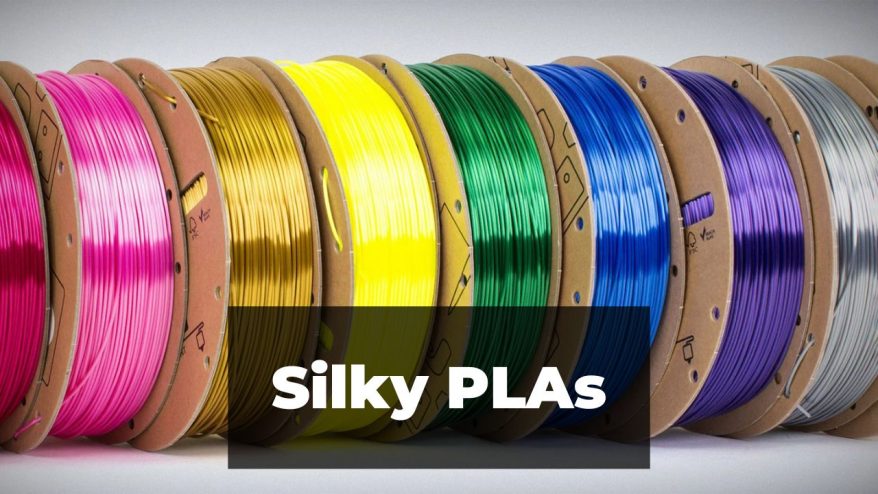
PLA is one of the most versatile filaments out there. It can be blended with different materials to change its color, texture, and even use
Different kinds of materials give you different results when blended with PLA, and one of the most popular of these is a kind of blend that gives PLA a silky finish.
|
|
|
|
|
$24.99
|
|
|
|
Calling it silk PLA is something of a misnomer. Unlike marble 3D print PLA or wood PLA, it isn’t named after its ingredient, and is instead referring to the silky sheen of the finished print.
Here we’re going to look at silk PLAs. What they are, how they work, how they differ from standard filaments, and the best places to buy your first batch.
What is Silk PLA?
Simply put, silk PLA is PLA that’s been treated with additional polymers to achieve a glossy, matte-like look. Which polymers and to what ratio differ between brands, so it’s good to know which is right for you.
Don’t be confused by its name, as there’s no actual silk used, so to call it ‘silk’ PLA is more to describe its look than its ingredients.
Silky PLAs are excellent for projects that would look better with a polished sheen, as they do offer some aesthetic differences over standard PLAs that work well for decorations and even toys.
Silk vs Standard PLA: What’s the Difference?
As well as their shiny surface, silky PLAs are more flexible than standard filaments due to the polymer blend. The flexibility comes as a side effect to the treatment that gives them the sheen, as the added materials often soften the PLA.
While this doesn’t mean much if you’re simply making decorative pieces, it does mean that silk PLAs aren’t so steadfast and shouldn’t be used for important things like part replacements or moving mechanical parts.
Aesthetically, the differences are clear. With a matte-like finish and shiny surface, silky PLA makes for some really eye-catching designs. They’re ideal for decorative items, simple toys and models, and even minifigures.
How to 3D Print with Silk PLA
- Print Temperature: 180 – 220℃
- Print Speed: 30 – 80mm/s
- Heated Bed Temperature (if applicable): 60 – 80℃
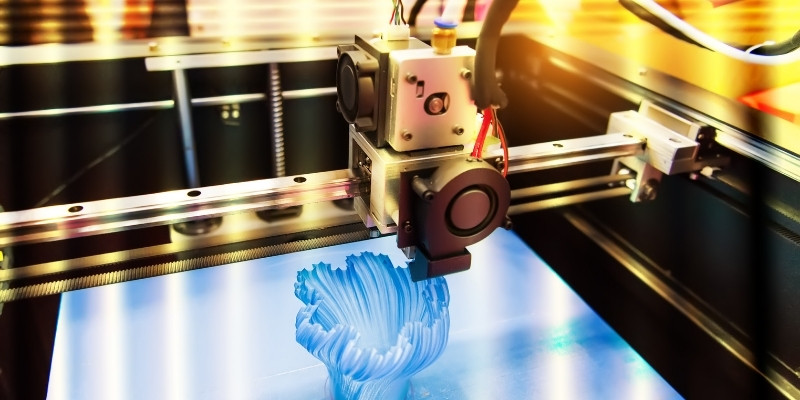
Broadly speaking, printing silky PLA isn’t much different from regular PLA. While silk PLAs are known for being more flexible than standard PLA filament, some people do report more clogging and imperfections when printing with them.
Though it is worth noting that these clogging reports are likely due to the PLA being used with less-than-ideal settings for the kind they’re using.
How different printing with silk PLA is compared to using normal filaments generally depends on how much polymer was used in the blend to give it its silky sheen.
This means that while you will probably be fine simply printing with your usual settings, there may be some trial-and-error involved if you’re using a brand that included more additional ingredients when manufacturing.
For the best results printing with silk PLA, we recommend setting your printer to around 75% its normal speed and with an extruder temperature of around 210℃. If you have a heated print bed, a setting of no more than 65℃ seems to work best.
These settings will help reduce the chances of stringing and blobs as well as other warps or imperfections that could ruin an otherwise perfect print. You will have to wait a little longer, but the results should speak for themselves.
While you shouldn’t expect to change your settings beyond a tweak here and there, be prepared to make a few changes before you can print silky PLA with confidence. Here we’ll look at some of the best places to get your silk PLA so you can rest a little easier.
3DSourced is reader-supported. When you buy through links on our site, we may earn an affiliate commission. Learn more
Eryone Silk and Ultra Silk PLA
- Price: Check price on Amazon here
- Print Speed: 30 – 60mm/s
- Recommended Nozzle Temperature: 190 – 220℃
- Available Colors: White, Silver, Blue, Dark Green, and Pink

Pros
A very affordable and easy-to-print option.
Offer both silk and ultra silk PLA.
Boast a smooth finish that reduces the risk of nozzle issues.
Cons
Some have issues with the spool.
Eryone’s silk PLA is a very affordable and easy-to-print option that works well if you’re just wanting to test out some silk PLA to know what you’re getting into.
They offer both silk and ultra silk PLA. The key difference between the two is that, as the name suggests, the ultra silk is shinier and more glossy than their standard silk PLA. You’ll be happy to know, however, that the recommended printer settings are the same for both.
The other difference between the two is the range of colors on offer. The available colors listed above are for the regular silk PLA, while their ultra silk range is available in additional shining hues like red, gold, and bronze.
If you want to grab your favorite color, then you’d best move quickly, as Eryone silk PLAs often sell out quite fast!
Eryone silk PLA is also a good choice for those of you who are worried about clogging. Both variations boast a smooth finish that reduces the risk of nozzle issues commonly reported with silk PLAs. They’re also relatively odorless and naturally anti-tangle, making them great filaments for newcomers to 3D printing or anyone who just wants a hassle-free printing experience above all else.
Amolen Silky Shiny PLA
- Price: Check price on Amazon here
- Print Speed: 30 – 60mm/s
- Recommended Nozzle Temperature: 190 – 220℃
- Available Colors: Pink, White, Gold, Blue, Purple, Yellow, Grey, Orange, Copper, Wine, Red, Silver, Lavender, Green, Black, and Rainbow

Pros
Massive selection of silky PLA that won’t disappoint.
Minimum hassle with high performance when printing.
Can print in multiple colors in one project without needing a dual extruder.
Cons
Low recommended speed settings.
If Eryone’s admittedly limited range didn’t offer enough variety for your tastes, then Amolen’s store should be your next stop. Available in monochrome or in changing gradients a la rainbow PLA, they offer a massive selection of silky PLA that won’t disappoint.
As well as having a wider range than many others, Amolen also assures minimum hassle with their silk PLAs, which boast high performance when printing. While some people argue that clogging is still an issue, everyone seems to be in agreement that Amolen offers some of the shiniest PLAs around.
Their silky shiny PLA selection also includes rainbow PLA. This means you can print in multiple colors in one project without needing a dual extruder without losing the sheen that silky PLAs are known for.
Amolen is a good choice for silky PLAs if your focus is on variety and aesthetics. The many kinds of silk PLA are sure to match your tastes, and the excellent shine of the end results is nothing to sneeze at either.
The recommended printing speeds are a little lower than many other brands, however, so if you’re 3D printing silk PLA as part of a business (or are just impatient like me) you may be disappointed by having to wait longer for top-quality results.
Hatchbox Silk PLA
- Price: Check price on Amazon here
- Print Speed: 50 – 60mm/s
- Recommended Nozzle Temperature: 180 – 220℃
- Available Colors: Blue, Mint, White, Silver, Pink, and Brown
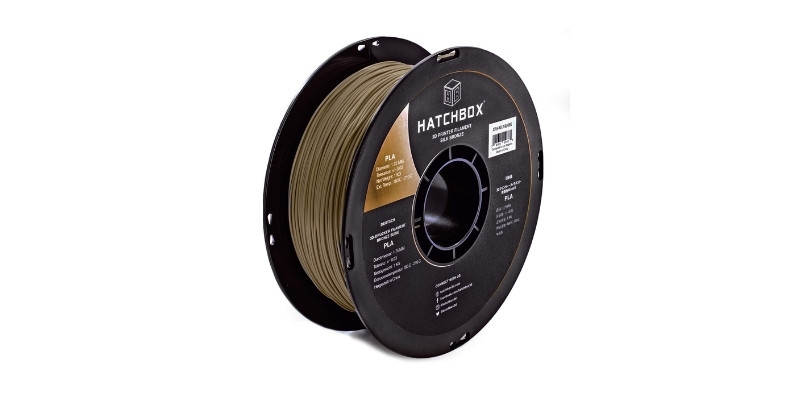
Pros
Doesn’t require a heated bed for top-notch results.
Decent recommended printing speed.
Cons
Doesn’t have the same variety as Amolen.
Hatchbox may not have the same variety as Amolen, but they make up for it with an easy-to-use and very reasonably priced selection of silky PLA filaments that look great to boot.
The main reason you should go for Hatchback over other silk PLA brands is that it doesn’t require a heated bed for top-notch results. This is very good news for those of you who either don’t have heated beds on their 3D printers, or simply want to make your 3D printing more eco-friendly.
In general, Hatchbox’s silky PLA filaments print with around the same settings as their standard PLAs. While this coupled with the act that they don’t need a heating bed may lead you to believe there’s a sacrifice in quality, we assure you that it’s just as glossy as you’d expect a silk PLA to be.
The recommended printing speed beginning at 50mm/s is also good news if you don’t like to wait around or need a high turnover for your 3D printing business. While it doesn’t have the fastest printing speed on this list, it’s still certainly a good pace.
Matterhackers Silky PLA
- Price: $24.99 — Available at Matterhackers here
- Print Speed: 50mm/s
- Recommended Nozzle Temperature: 190 – 220℃
- Available Colors: Blue, Green, Magenta, Purple, Raspberry, Gold, Silver, White, Rose Gold, and Color Blends.
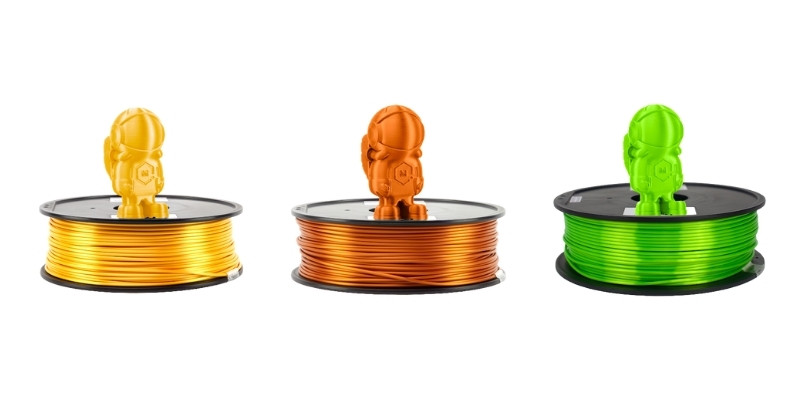
Pros
Available in a plethora of colors.
Doesn’t need a heated bed to print well.
Good adhesion.
Cons
No major cons.
Matterhackers is a household name in 3D printing, and their range of silky PLAs lives up to this legacy. Available in a plethora of colors, they also offer dozens of kinds of color blends including purple with gold and magenta with yellow just to name a few.
This is great news if you want some real color variety in your silky PLA projects but don’t have access to a dual extruder. Personally, I love the blue raspberry, but there are many more combinations to choose from.
As for their monochrome silk PLAs, the green is a nostalgic lime for me so it has my vote, but they offer so many more that you’re guaranteed to find your ideal color in the mix. If you do have a dual extruder, you can even experiment with these blends and make your own, or double down and make a four-colored masterpiece!
Like Hatchbox, Matterhackers silky filament doesn’t need a heated bed to print well, though they do still recommend it if your printer is equipped with one. This isn’t to say that you’ll be giving up quality if you can’t use a heated bed, as Matterhackers silky PLAs have good adhesion regardless. This is more than can be said for other brands that claim the same benefit.
Sunlu Silk PLA
- Price: Check price on Amazon here
- Print Speed: 50 – 100mm/s
- Recommended Nozzle Temperature: 190 – 220℃
- Available Colors: White, Black, Copper
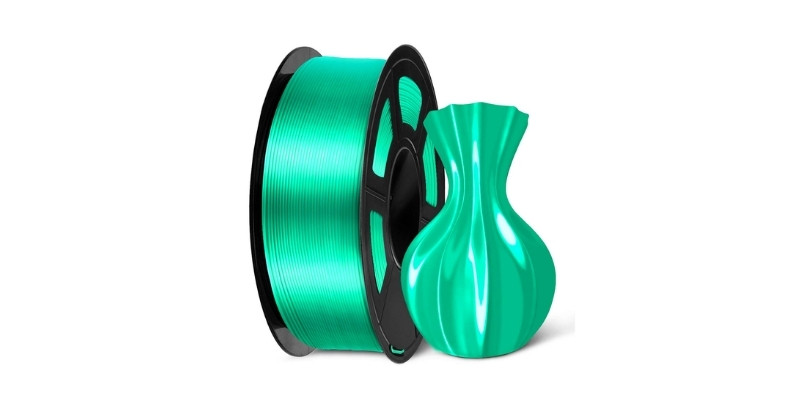
Pros
Great results.
Beautiful sheen and impressive durability.
Impressive recommended print speed.
Cons
More finicky than your standard brands.
Needs more extreme settings than other silky PLAs.
While Sunlu has some of the most impressively shiny silk PLAs, they are a little more finicky than your standard brands. While they also claim to not need a heated bed, many reviews do point out that this isn’t the case. Recommended temperatures for heated beds are also higher than most, often around 80℃.
The same is true for nozzle temperatures, with many people arguing that less than 220℃ often leads to bubbling and warping.
While needing more extreme settings than many other silky PLAs on this list, the results are arguably worth it. With a beautiful sheen and impressive durability, projects made with Sunlu’s silk PLA rarely disappoint.
Rest assured that the higher settings are to ensure a smoother printing process, so it’s not a hassle through and through.
The available colors change depending on stock, so don’t be disappointed by the list above. They also have been known to offer additional hues like pink, blue, and green. Though they are not listed on their store at the time of writing.
The main draw for Sunlu’s silk PLA above others is its impressive printing speed of up to 100mm/s. This is excellent news for those of you who don’t want to wait around or otherwise need your projects to be completed quickly.
At almost double the expected print speed of most silky PLAs, and at a great price, Sunlu silk PLA is ideal for small businesses.
eSun eSilk PLA
- Price: Check price on Amazon here
- Print Speed: 35 – 60mm/s
- Recommended Nozzle Temperature: 190 – 210℃
- Available Colors: Orange, Yellow, White, Violet, Red, Purple, Lime, Jacinth, Green, Cyan, Dark Blue, and Pink.
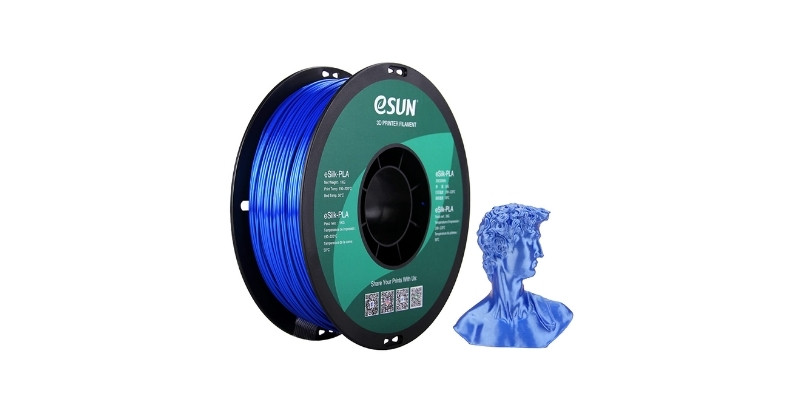
Pros
Ideal for larger projects that can be marred by the obvious lines present in other FDM projects.
A heated bed isn’t necessary.
Highly durable and has a long shelf life.
Cons
Only available in basic colors.
Chinese manufacturer eSun has its own line of silky PLAs they call eSilk. While only available in basic colors, it’s a great silky PLA that reviews well and looks great.
eSilk PLA has the smoothest surface of any PLA on this list, with printing layers being practically invisible, it’s ideal for larger projects that can be marred by the obvious lines present in many other FDM projects.
Much like Sunlu, eSun claims that a heated bed isn’t necessary. And also like eSun, this still doesn’t quite seem to be the case, as optimal results come from heated beds at around 80℃.
Despite silk PLA being more flexible than other PLAs, eSilk is highly durable and has a long shelf life. It can even be used as mechanical parts, unlike most silky PLAs. We still don’t recommend using it for anything particularly important like vehicle repair, however.
Overall, eSilk is the ideal silky PLA if you’re planning larger or more intricately designed projects. While it still works well with smaller prints, it won’t be living up to its full potential.
eSilk is probably the best-looking of the brands on this list, but is also amongst the most expensive. You may want to look elsewhere if you’re only planning small prints or are on a budget.
Related Posts:






